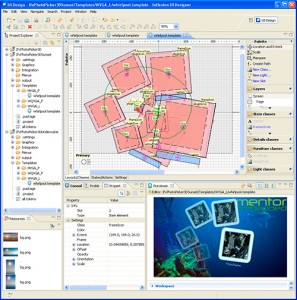No question, all layers of the embedded software are impacted when a touchscreen is used on a device. A serious challenge is finding space to visually show a company’s unique brand identity, as it is the software that runs on the processor that places the pixels on screen. From the software point of view, the touchscreen removes one abstraction level between the user and software. For example, many devices have removed ‘OK’ buttons from dialogs as the user can click the whole dialog instead of clicking the button.
Actually, software plays an even more critical role as we move into a world where the controls on a device are virtual rather than physical. In the lowest level of software, the touchscreen driver provides a mouse-emulation that basically means the same as clicking a mouse cursor on certain pixels. However, the mouse driver gets its data as “relative” while the touchscreen driver gets its data as “absolute.” Writing the touchscreen driver is usually trivial, as this component only takes care of passing information from the physical screen to higher levels of software. The only inputs the driver needs are Boolean if the screen is touched, and in what x- and y-axes has the touch taken place.
At the operating system level, a touchscreen user interface means more frequent operating system events than the typical icon or widget-based user interface. In addition to a touchscreen, there may also be a variety of different sensors (e.g., accelerometers) inputting stimuli to the operating system through their drivers. Generally, the standardized operating system can give confidence and consistency to device creation, but if it needs to be changed, the cost of doing so can be astronomical due to testing the compatibility of other components.
The next layer is where the middleware components of the operating system are found, or in this context, where the OpenGL/ES library performs. Various components within this library do different things from processing the raw data with mathematical algorithms, providing a set of APIs for drawing, interfacing between software and hardware acceleration, or providing services such as rendering, font engines, and so on. While this type of standardization is generally a good thing, in some cases, it can lead to non-differentiation – in the worst case, it might even kill the inspiration of an innovative user interface creation. Ideally, the standardized open library, together with rich and easily customizable user interface technology, results in superb results.
The application layer is the most visible part of the software and forms the user experience. It is here where developers must ask:
1) Should the application run in the full-screen mode or enable using widgets distributed around the screen?
2) What colors, themes, and templates are the best ways to illustrate the behavior of the user interface?
3) How small or large should the user interface elements be?
4) In what ways will the user interface elements behave and interact?
5) How intuitive do I want to make this application?
In the consumer space, there are increasingly more competitive brands with many of the same products and product attributes. Manufacturers are hard-pressed to find any key differentiator among this sea of “me too” offerings. One way to stand out is by delivering a rich UI experience via a touchscreen display.
We are starting to see this realization play out in all types of consumer goods, even in white goods as pedestrian as washing machines. There are now innovative display technologies replacing physical buttons and levers. Imagine a fairly standard washing machine with a state-of-the-art LCD panel. This would allow the user to easily browse and navigate all the functions on that washing machine – and perhaps learn a new feature or two. By building an attractive touchscreen display, simply changing the software running on the display can manifest any customization work. Therefore, things like changing the branding, adding compelling video clips and company logos, all become much simpler because it’s all driven by software. If the manufacturer uses the right technology, they may not even need to modify the software to change the user experience.
Driven by the mobile phone explosion, the price point of display technology has come down significantly. As a result, washing machine manufacturers can add more perceived value to their product without necessarily adding too much to the BoM (bill of materials). Thus, before the machine leaves the factory, a display technology may increase the BoM by $30, but this could increase the MSRP by at least $100. No doubt, this can have a huge impact on the company’s bottom line. This results in a “win-win” for the manufacturer and for the consumer. The manufacturer is able to differentiate the product more easily and in a more cost effective manner, while the product is easier to use with a more enhanced UI.
The final part in this four-part series presents a checklist for touchscreen projects.
Tags: Touch Screens


Interesting article … but you omit any mention of the modern elements of touchscreen user interfaces such as multi-touch, gestures, haptics, and tactile feedback. Those are the true differentiators.